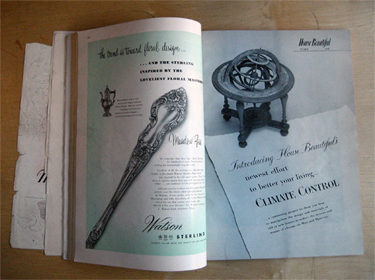A Machine for Climate:
The House Beautiful/AIA Climate Control Project
1949-1952
4.0 | Factors
The interest in climate-sensitive architecture in the late 1940s-early 1950s was driven by a few factors which include the following:
4.1 | THE QUALITY OF NEWLY CONSTRUCTED SUBURBS
- The inadequacy of post-WWII residential construction and the planning of developer housing
- The growth of suburbs spurred an interest in creating smarter, greener developments
4.2 | THE PRESERVATION AND PROMOTION OF MODERNISM
- An interest in bringing the qualities of modern architecture to a wider audience and broader clientele
- An interest in finding a functional applicability for the aesthetic and principles of modern architecture
- A concern over the dominant aesthetic of American architecture (a desire for the promotion of modernism over historicism)
4.3 | THE THREAT OF THE FUTURE
- A temporary war-time threat of a fuel shortage
- The threat of longer-term shortages 20-30 years into the future as predicted by economists and scientists
4.4 | AVAILABILITY OF DATA AND TECHNOLOGY
- The availability of solid climate data from the National Weather Service
- The availability of new building technologies which architects and clients were anxious to find uses for
4.5 | THE PROMOTION OF AN 'AMERICAN' AESTHETIC AND LIFESTYLE
- Efficiency of space, materials, money
- Efficiency and productivity of man
- Efficiency and productivity of a nation
- The association of climate-sensitive design with an 'American' aesthetic or identity

Magazine spread from House Beautiful, 1949. Photograph by author.